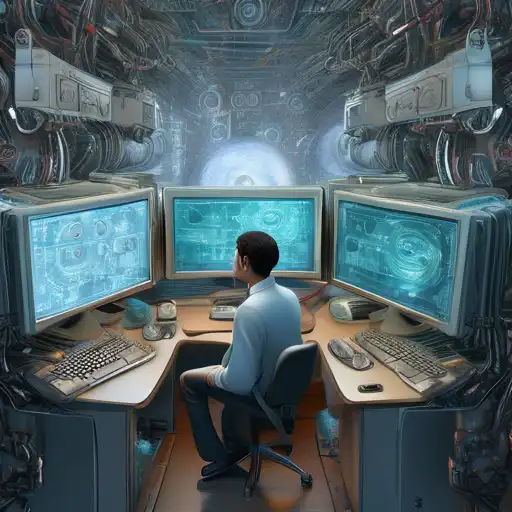Introduction to Computer Vision
Computer vision is a field of artificial intelligence (AI) that enables machines to interpret and understand the visual world. By leveraging digital images from cameras and videos and deep learning models, machines can accurately identify and classify objects—and then react to what they "see."
The Evolution of Computer Vision
The journey of computer vision began in the 1960s, but it wasn't until the advent of deep learning and convolutional neural networks (CNNs) that the field truly began to flourish. Today, computer vision is at the heart of numerous applications, from facial recognition systems to autonomous vehicles.
How Computer Vision Works
At its core, computer vision involves the acquisition, processing, analysis, and understanding of digital images. This process typically involves several steps, including image acquisition, preprocessing, feature extraction, detection/segmentation, and high-level processing.
Key Technologies Behind Computer Vision
- Deep Learning: Enables the automatic extraction of features from images.
- Convolutional Neural Networks (CNNs): Specialized neural networks designed for processing structured grid data like images.
- Image Processing: Techniques to enhance or otherwise manipulate images for better analysis.
Applications of Computer Vision
Computer vision has a wide range of applications across various industries. Here are a few notable examples:
- Healthcare: From diagnosing diseases from medical images to assisting in surgeries.
- Retail: Automated checkout systems and inventory management.
- Automotive: Powering the vision systems of self-driving cars.
- Security: Facial recognition and surveillance systems.
Challenges in Computer Vision
Despite its advancements, computer vision still faces several challenges, such as understanding context, dealing with varying lighting conditions, and recognizing objects from different angles. Overcoming these challenges requires continuous research and development in the field.
The Future of Computer Vision
The future of computer vision is incredibly promising, with potential advancements including more sophisticated AI models, improved accuracy in object recognition, and broader applications in everyday life. As technology evolves, the possibilities for computer vision are virtually limitless.
For those interested in diving deeper into the world of AI and machine learning, exploring machine learning basics can provide a solid foundation.
Conclusion
Computer vision is transforming the way machines interact with the visual world, offering unprecedented opportunities across various sectors. As we continue to advance in AI and deep learning, the capabilities of computer vision will only expand, further blurring the lines between human and machine perception.
